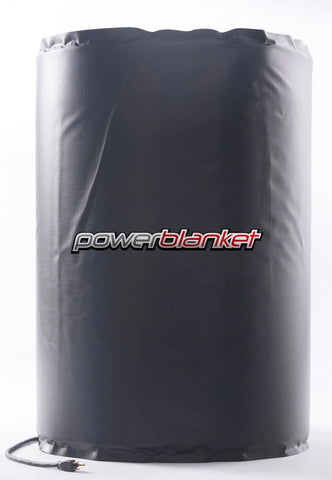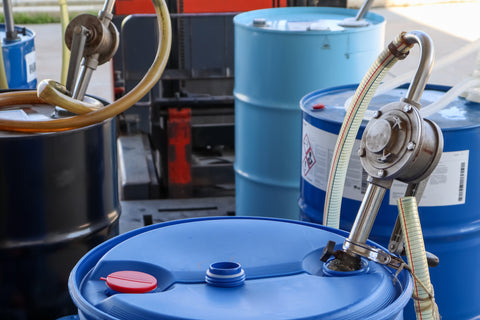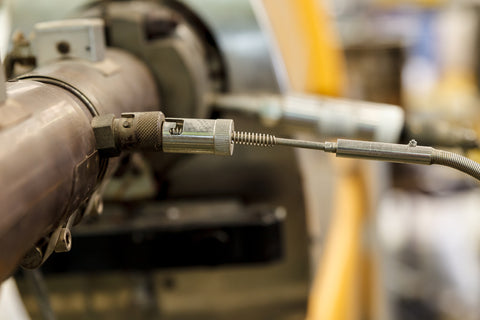The Importance of Warm Composting: Overcoming Winter Challenges with Drum and Barrel Warmers
Composting is an eco-friendly way to recycle organic waste, transforming kitchen scraps and yard waste into nutrient-rich soil.
Composting is not only about waste reduction; it's about creating a closed-loop system where waste is returned to the earth, enriching the soil and promoting sustainable gardening. However, while summer composting requires little maintenance, winter composting poses unique challenges due to cold temperatures and decreased microbial activity. The reduced sunlight, shorter days, and frosty conditions can make it seem almost impossible to continue composting. Yet, there's a solution: drum and barrel warmers. These devices serve as a beacon of warmth in the icy cold, helping maintain the ideal temperature for decomposition and ensuring your compost remains active and productive throughout the winter months. They can wrap directly around your composting bin to allow you to control the internal temperature all winter long.
Why is Winter Composting a Challenge?
The very essence of composting is a biological process. The composting process relies on beneficial microbes, tiny organisms working tirelessly to break down organic matter in the compost pile or compost bins. But like all living creatures, they have optimal conditions in which they thrive. In cold weather, these microbes become less active, and their numbers can dwindle, and unfortunately, the decomposition process slows. Think of them as tiny workers going on a winter break. Freezing temperatures can further exacerbate the challenge, potentially turning your once-thriving compost pile into a frozen, static mass, halting the composting process altogether. And it's not just about the microbes; when food scraps freeze, their cellular structure changes, slowing down their natural breakdown. This can be problematic as frozen scraps and food waste might attract unwanted pests, turning your winter compost bin into a winter buffet for critters.

The Role of Drum and Barrel Warmers in Winter Composting
But all is not lost when winter arrives. For those serious about winter composting, drum and barrel warmers emerge as the unsung heroes. They provide a consistent heat source, helping retain essential warmth in the compost bin, ensuring that the decomposition process continues even when the world outside is blanketed in snow. Whether you're a backyard composter using a traditional compost pile, regular compost bin, or someone using a more modern approach with a compost tumbler, or perhaps you're running a community composting initiative with various composting bins, these warmers can be a valuable addition. By adding this layer of temperature control, you're ensuring the health of your compost and contributing to a more sustainable and eco-friendly winter gardening practice where you can see success while composting in the winter.
Benefits of Using Warmers for Composting in Winter

-
Efficiency: Warmers keep the compost active year-round, ensuring continuous decomposition of kitchen waste, plant debris, and other organic materials.
-
Cost Savings: By preventing compost from freezing, you reduce the time needed to produce finished compost, allowing for more cycles throughout the year.
-
Safety: A warm compost pile ensures that food waste, including items like eggshells and coffee grounds, breaks down faster, reducing the risk of attracting pests.
Choosing the Right Warmer for Your Compost Needs
Making the right choice for a compost warmer is much like choosing the right outfit for the weather; it has to fit well and serve the purpose. Consider the size of your compost pile or bin when selecting a warmer. For a large compost pile or traditional compost piles, a more extensive, perhaps more robust warmer might be necessary to encompass the pile and provide even heating. On the other hand, if you're diving into composting with a compost tumbler or a more compact compost bin, it's crucial to ensure the warmer fits snugly around it for maximum efficiency. The snug fit ensures no gaps, minimizing heat loss and optimizing the internal temperature for decomposition.
These heating jackets can come in a wide variety of sizes and are able to fit around drums or bins from 15 to 110 gallons. They can also be laid directly over or under your winter compost piles or be moved between piles or bins as necessary.
How to Use Drum and Barrel Warmers for Compost
Think of these warmers as a heating blanket for your compost. Position the warmer around, on top of, or under your compost bin or pile, much like you'd wrap a blanket around someone. If you are using compost tumblers or bins, it can be beneficial to ensure they have a tight-fitting lid on top. This lid acts as a seal, helping retain heat and maintain the optimal temperature range.
Just like cooking, monitoring is critical. Keep an eye on the temperatures, ensuring they remain in the sweet spot. Too high temperatures can be detrimental, potentially killing off the beneficial bacteria that are the backbone of composting. It's all about maintaining a cozy, warm environment, not a scorching hot one.
It is also important to ensure that your bin is clean before you start using it for compost in the winter, as any potential contaminants could make your compost unsafe to use with your garden.
Tips for Successful Winter Composting Beyond Heating
While heating is a significant aspect of winter composting, there are other elements to consider:
-
Moisture Control: Just as plants need the right amount of water, so does your compost. Ensure excess moisture is drained off. A soggy compost pile can become anaerobic, which not only hinders the composting process but can also produce foul odors. Think of it as preventing your compost from catching a cold during winter.
-
Balancing Materials: It's all about the recipe. Maintain a balanced mix of green materials (the nitrogen-rich stuff like food scraps and grass clippings) and brown materials (the carbon-rich elements like fallen leaves and hay bales). This balance not only aids in decomposition but also helps in controlling moisture and odor.
-
Regular Turnover: Imagine the compost as a bustling city; it needs fresh air to breathe. Even in the chill of winter, turning your compost occasionally can help introduce air, aiding the microbes in their job and speeding up the decomposition process. It's like giving your compost a gentle massage to keep it active and happy.

Ensuring Year-Round Composting Success with Warmers
The vision of winter composting once considered a gardener's dream, is now an attainable reality. Composting in winter can indeed be a challenging endeavor, but it's a hurdle, not a blockade. With the right tools, such as a warmer that can fit to your bin or tumbler, and a bit of knowledge, winter becomes just another season, not a stop sign for your composting journey.
These warmers act like a snug blanket for your compost, shielding it from the harshest cold and ensuring the microbes inside continue their decomposition dance. By pairing these devices with tried-and-true winter composting tips, such as layering green and brown materials or ensuring adequate moisture control, you can ensure that your compost remains active, thriving, and productive, even as snowflakes dance around. The result? A composting system that doesn't take seasonal breaks, offering you rich, dark, and crumbly compost whenever you need it.







